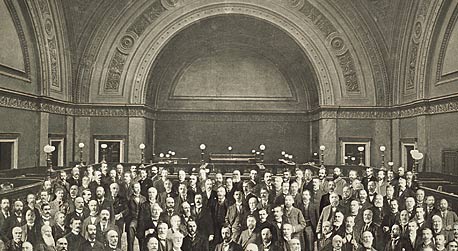1820-1860

Seals and signatures on the document establishing Lancaster Joint Stock Banking Co, 1826
Seals and signatures on the document establishing Lancaster Joint Stock Banking Co, 1826
In the early years of the 19th century England suffered a succession of financial crises, the most devastating of which, in 1825, ruined 60 banks. In an effort to increase stability, the government changed the law to permit the formation of so-called ‘joint stock banks’; larger shareholder-owned banks like those that already existed in Scotland. The first sizeable example of the new banks was Lancaster Joint Stock Banking Company, established in 1826 and later to become part of NatWest. Within a decade, there were almost 100 such banks in towns and cities across England, Wales and Ireland. Among them were Ulster Bank (established 1836), as well as National Provincial Bank of England (1833) and Westminster Bank (1836), which would eventually merge ‘Nat’ and ‘West’ to become NatWest.
By the mid-1840s, the contrast between the banking systems in different parts of Britain and Ireland was already well-established, but the gulf was widened by legislation in 1844 and 1845. In England and Wales, the new law was destined to bring a gradual end to banks other than the Bank of England issuing their own paper currency. In Scotland and Ireland, however, the new law had different terms, which made it easier for banks to retain their banknote issues. The Royal Bank of Scotland and Ulster Bank have continued to do so to this day.









